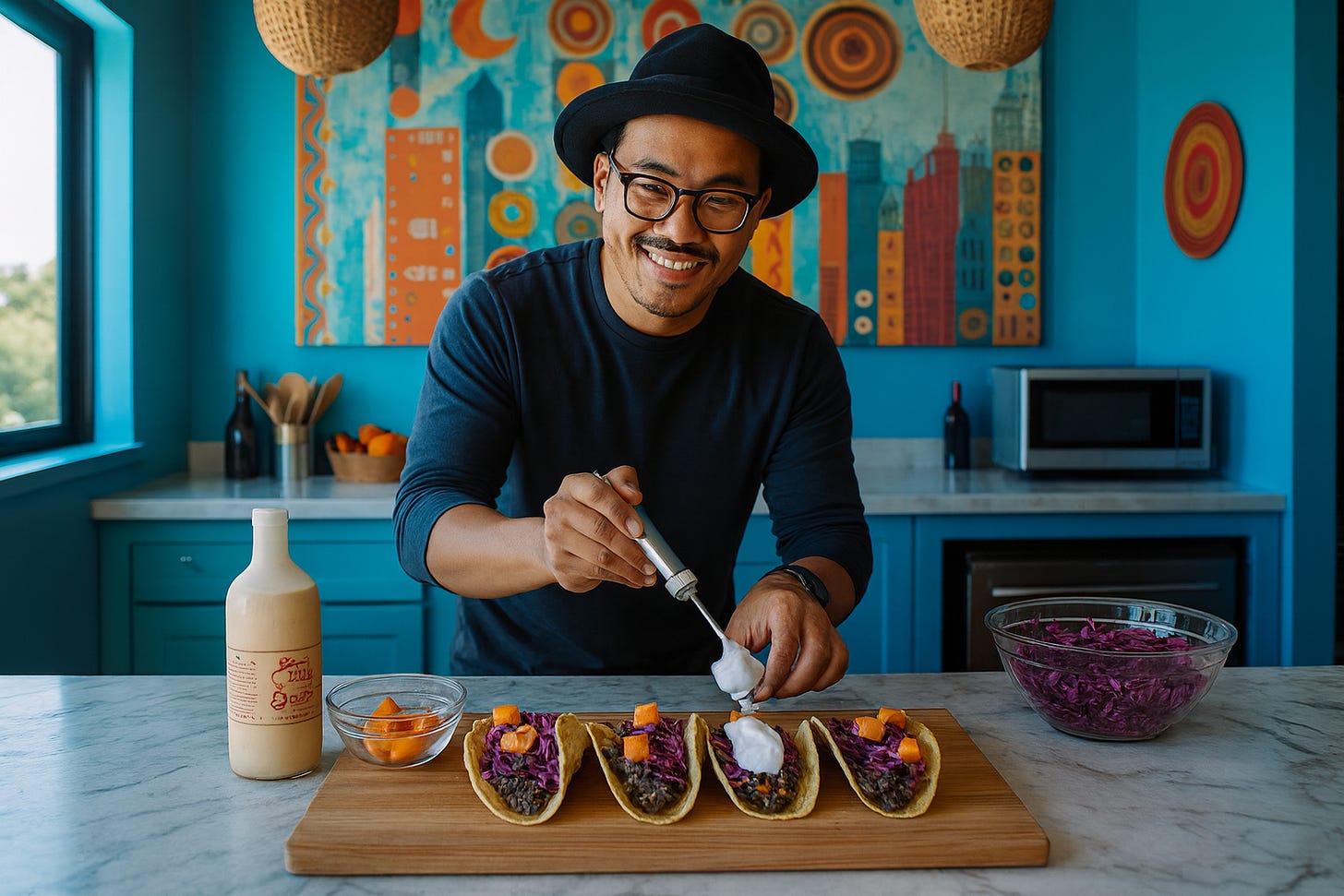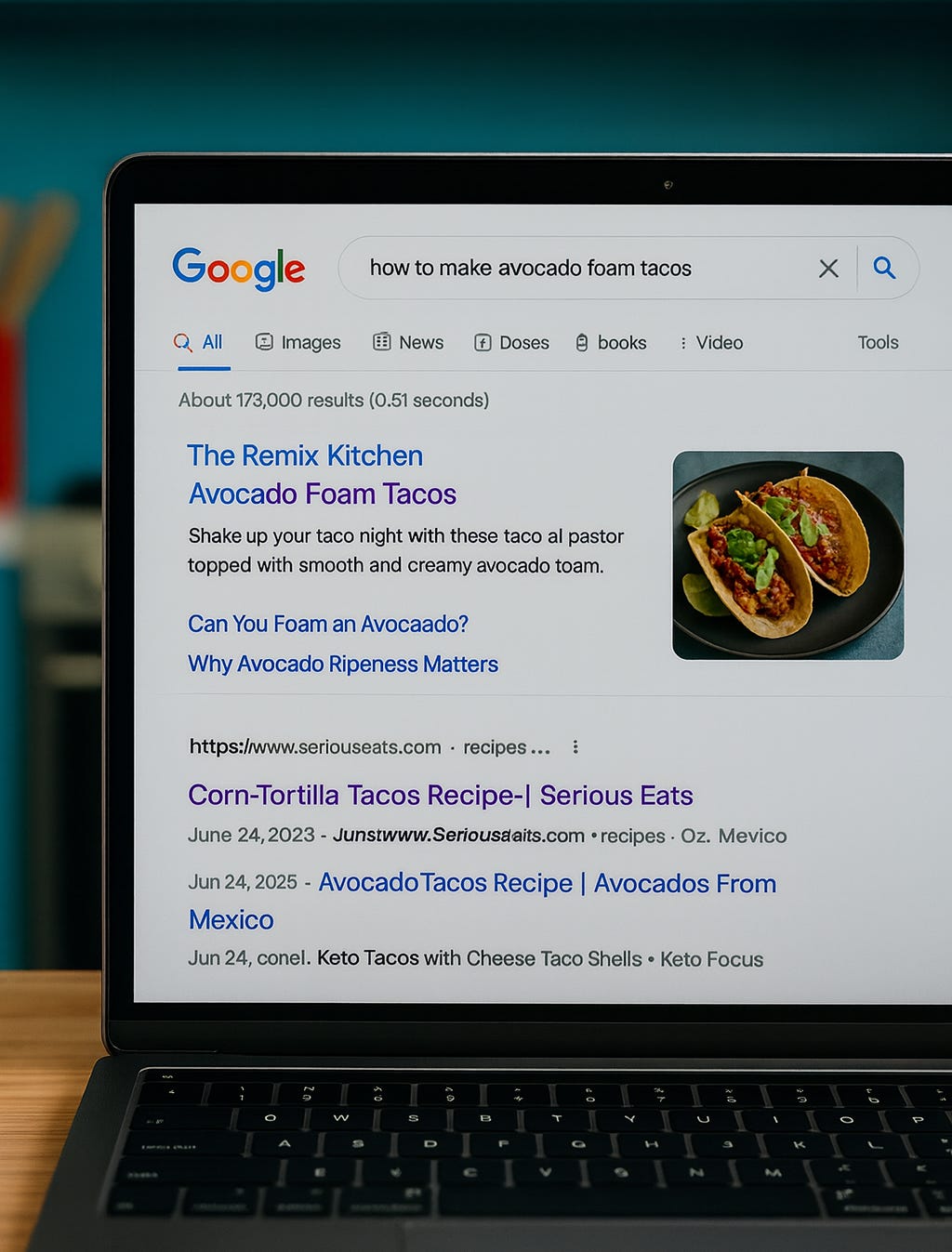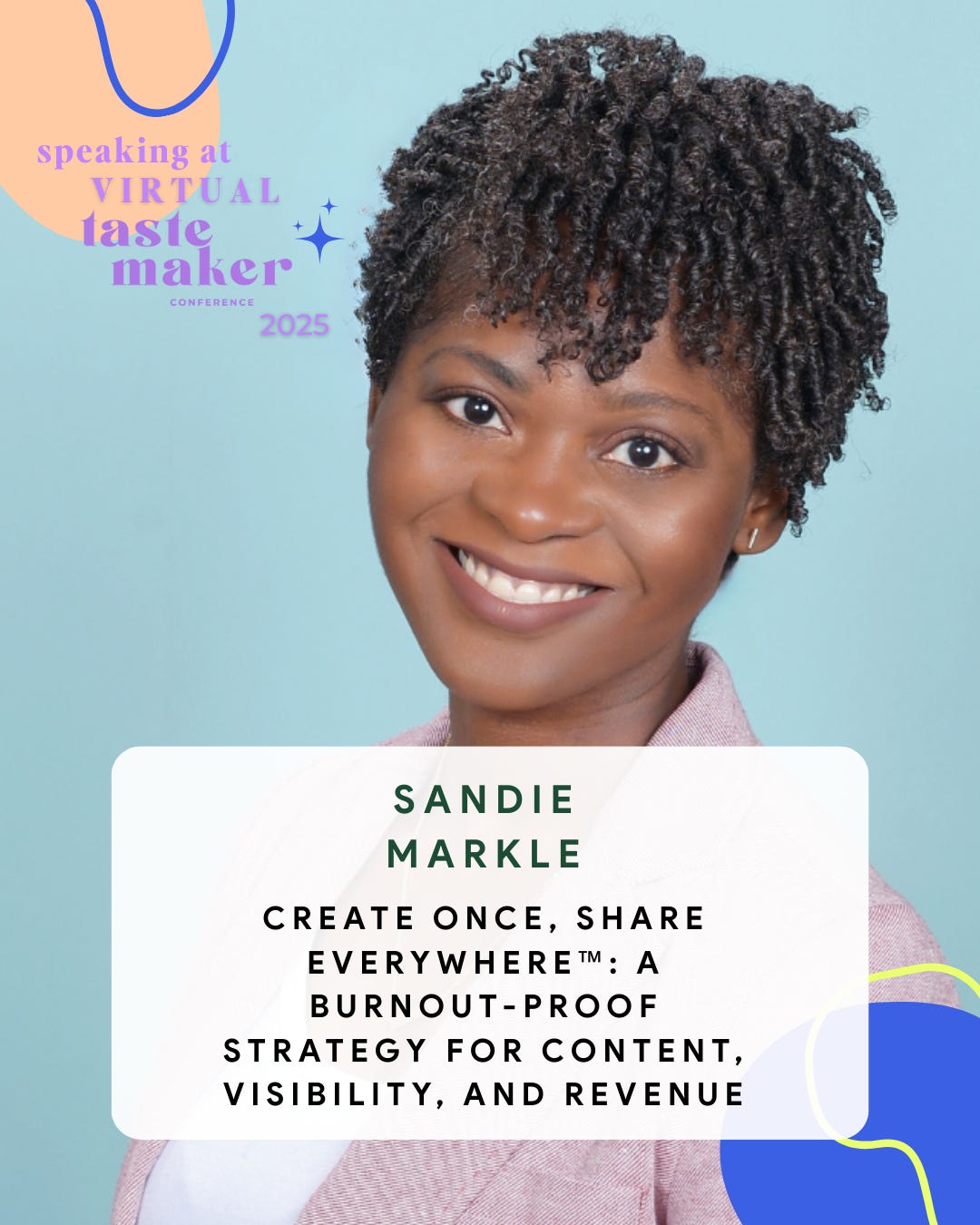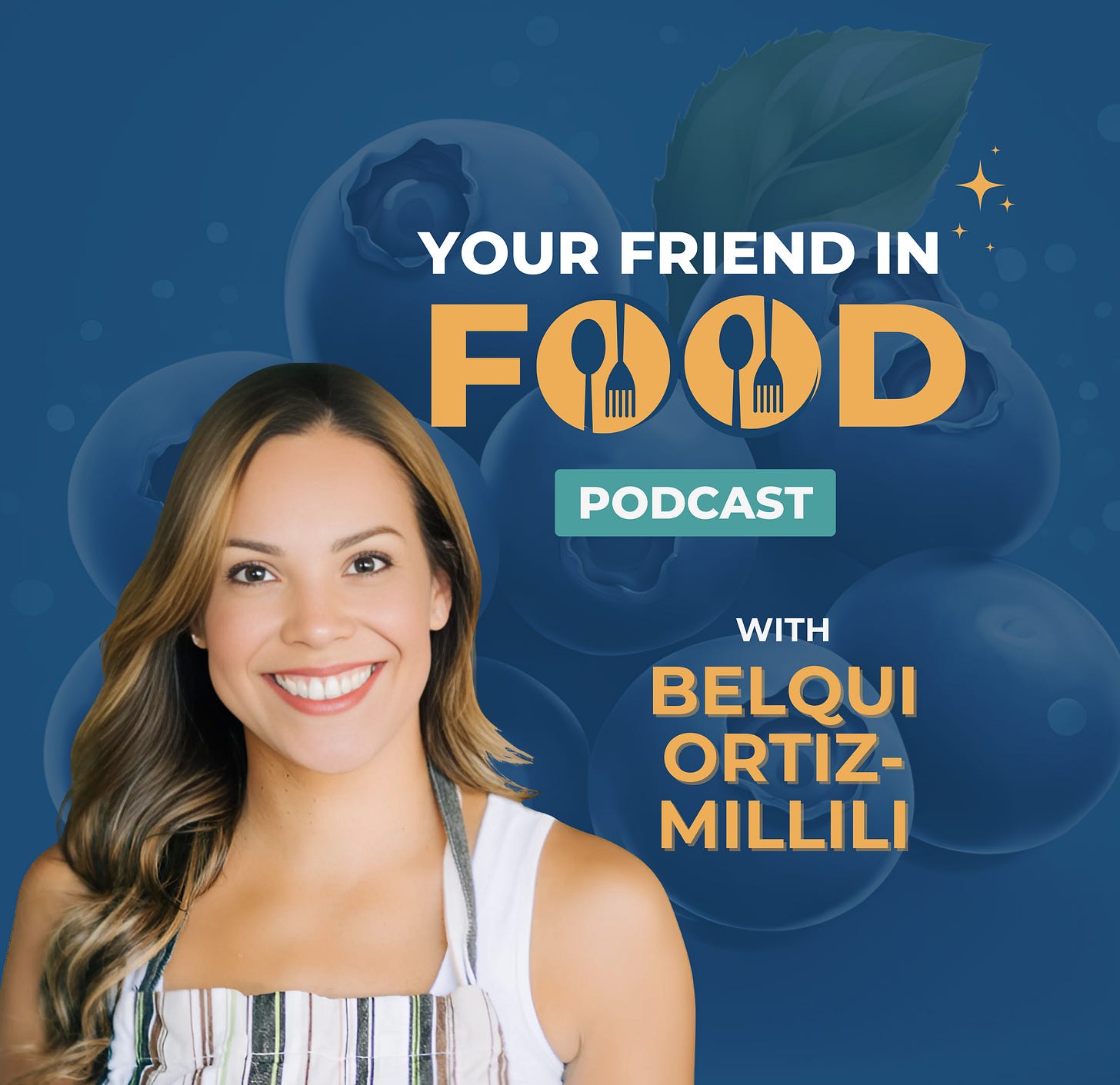Metadata gone missing
The tiny details that quietly kill discoverability
I love music. LOVE it. One minute it’s 80s–90s UK pop (yes, Go West’s King of Wishful Thinking is currently on repeat), the next it’s my all-time favorite album, The Miseducation of Lauryn Hill, and by Friday night, probably some Andrea Bocelli. Don’t even get me started.
Music’s got range, and honestly, so does cooking.
I’m just as obsessed with the artistry of a Michelin-star chef as I am with a home cook experimenting in their kitchen. Both take rhythm, layering, and creativity. That’s why this issue mixes all of it together, with a tech twist. You know how I do.
Today we’re talking about metadata. And metadata? It’s the rhythm section of your content. The baseline that makes the melody: your recipes, stories, and photos, actually hit. Without it, platforms hear noise. With it, they finally catch the vibe.
Which brings me to this week’s story: a DJ who knows a thing or two about rhythm, but had to learn how metadata could make his recipes sing.
The DJ who found his rhythm in recipes
Meet Tyler Reyes, a 31-year-old DJ based in San Diego. At night, he spins house and techno sets that pulse through the clubs and beach bars of Pacific Beach. But when the music fades, Tyler steps into a secret alter ego: the experimental cook who dreams of being part Gordon Ramsay, part Wylie Dufresne.
His blog, The Remix Kitchen, is where he puts those experiments into play, avocado foam tacos, ramen carbonara, churros filled with passionfruit curd. Bold, playful, and inventive, just like his DJ sets.
The static in his signal
At first, Tyler was buzzing. He’d just launched The Remix Kitchen, and the first few posts felt like a rush. He hit publish, shared links with friends, and watched as his DJ crew commented with fire emojis on his churro-with-passionfruit-curd reel. For a moment, it felt like maybe food blogging would take off.
But the glow faded quickly. His traffic flatlined after the initial clicks from friends. Google buried his recipes under pages of simpler ones. Pinterest sent him nowhere. TikTok showed him a handful of views before the algorithm moved on.
The frustration built. He’d pour hours into plating dishes, styling photos, even editing clips that matched his playlists, only to get silence back. “Maybe my food just isn’t good enough”. He started second-guessing the point of blogging at all.
The “aha” came one late night, scrolling through Google after his set. He noticed another creator’s recipe, something as basic as “Quick 3-Ingredient Avocado Toast” sitting at the top of the search carousel. The difference? Their recipe had a thumbnail, ratings, cook time, and step-by-step instructions all neatly displayed. His didn’t.
That’s when Tyler looked deeper. He realized the problem wasn’t the cooking, it was the metadata.
Blog titles were vague (“Something New I Tried”).
Images had no alt text.
Categories and tags were inconsistent.
Recipe plugin fields sat half-empty.
To platforms, his inventive recipes looked like static. There was no rhythm, no clear signal. They couldn’t tell what the content was or who it was for.
Filling in the blanks
Tyler didn’t overhaul everything at once. He started small, picking one recipe to experiment with: his avocado foam tacos.
Instead of leaving fields blank, he filled in every detail his plugin asked for:
Title: Avocado Foam Tacos with Chile-Lime Dust
Prep time: 25 minutes
Cuisine: Fusion
Categories: Tacos, Modernist Cooking
Tags: Molecular gastronomy, Avocado, San Diego food
It felt tedious at first, like organizing cables after a set. But within a several weeks, impressions on Google were up. His tacos finally had a thumbnail in search. Pinterest started recommending his pin to people looking for “fusion recipes.”
It wasn’t a viral moment. It was a crack in the silence, proof that platforms were finally hearing his signal. A beacon of hope.
Finding the framework
Once he saw that first spark, Tyler went deeper and applied the frameworks I talk about here (and will be talking about more):
Create Once, Share Everywhere™
He stopped treating recipes as one-off posts and started treating them as reusable assets. For his tacos, he built a structured draft in his CMS that could break into pieces: a short TikTok clip of the foam process, a Pinterest pin of the plated dish, an Instagram carousel with behind-the-scenes shots, and the full recipe on his site. Each version linked back to the original post, creating multiple entry points.Structured fields matter
He worked through his entire plugin, not just prep time and categories, but cook time, servings, cuisine tags, and every other field that helped platforms understand his recipes.Metadata as amplifier
Clear, descriptive titles replaced vague ones. Alt text made images searchable. Suddenly, his blog wasn’t noise, it was a strong, consistent signal.
The remix pays off
Within a year, the shift was obvious. Tyler wasn’t just online, he was everywhere:
His avocado foam tacos appeared in Google recipe carousels.
Pinterest recommended his boards to users searching for “fusion recipes.”
TikTok categorized his content under trending food tags, putting him next to creators he admired.
A smart kitchen app pulled his recipe into its “weeknight fusion” meal plan, introducing it and The Remix Kitchen to thousands of home cooks.
A food tech brand reached out about testing their new ingredient kit, ecstatic at how easy it was to integrate his structured recipe. That collaboration turned into his first paid partnership.
Tyler didn’t change the recipes. He changed the structure. The metadata gave his content rhythm, one that search engines, social feeds, apps, and even brands could finally dance to. And once platforms could read it, it became something else too: monetizable.
The Blueberri Stack
Food + media news worth a bookmark
1. Google Zero looms: publishers lose traffic to AI Overviews
Half of publishers and site owners report traffic drops from Google’s AI Overviews—AI summaries that answer queries without requiring clicks. Media execs call this the “Google Zero” effect.
50% of publishers and website owners have seen a drop in visits thanks to AI Overviews. Google argues those visits are “higher quality,” but publishers are bracing for a future less dependent on referrals and more reliant on owned audiences.
Why it matters: Food bloggers could see the same. If recipes surface in summaries without click-throughs, ad-driven revenue is at risk. Creators will need to explore alternatives like direct subscriptions, partnerships, and exclusive content.
Perplexity launches $42.5M publisher revenue-sharing plan
Perplexity announced a new Comet Plus subscription ($5/month), promising to share 80% of proceeds with publishers whose content appears in AI searches. Publishers will earn when their articles generate traffic in Comet, appear in searches, or are included in AI tasks.
Why it matters: It’s one of the first models to acknowledge that content is now consumed by AI agents as much as humans. But splitting $42.5M across publishers could amount to pennies, hardly replacing the traffic losses many already face. Still, it sets a precedent food bloggers should watch as AI search reshapes discoverability.
Rotimatic’s AI roti maker launches in India
I love roti so much, so I was floored by this news! Rotimatic unveiled the Rotimatic Next, an AI-driven roti maker that produces fresh rotis in under two minutes.
Why it matters: Smart kitchen devices are expanding fast, creating affiliate, content, and partnership opportunities for bloggers who can align their recipes with these tools.
Dubai’s first AI chef takes charge at a fine dining restaurant
A new Dubai restaurant announced its menus will be created by Chef Aiman, an AI model trained to develop inventive dishes, with human chefs refining the results.
Why it matters: AI-generated food experiences are no longer theoretical. Structured, data-rich content could help creators influence how food ideas are pulled into these systems.
Speaking at Virtual Tastemaker Conference
I’m excited to share that I’ll be speaking at the Virtual Tastemaker Conference this September. Like… really excited!
Content doesn’t scale without structure, and most food creators are stuck in a cycle of posting everywhere without a clear system.
This isn’t about chasing trends or buying more tools, it’s about building a strategy that actually works. Your content is an asset.
Come ready to rethink how you publish, and walk away with clear steps to make your content work harder (so you don’t have to).
Your Friend in Food: Belqui of Belqui’s Twist
This week on my podcast, I sat down with Belqui Ortiz-Millili of Belqui’s Twist, who I consider my friend in food.
We talk about:
How we met
Mental health and creating at your own pace
Why the best recipes often start with leftovers
Listen on Spotify or wherever you listen to your podcasts.
Make metadata pay
Like Tyler, your structured content can open the door to partnerships—if you know how to pitch them. The Tech Partnerships Playbook gives you scripts, templates, and examples to pitch and land collaborations with food tech companies.
Vocab of the Week
Recipe schema
Recipe schema is a type of metadata that tells search engines exactly what’s in your recipe, things like ingredients, prep and cook times, nutrition info, and ratings.
Why it matters: if those fields are left blank in your CMS or plugin, your recipe may not qualify for rich results like carousels or star ratings in Google. That means fewer clicks, less visibility, and less revenue.
Recipe schema is how platforms read your recipe. Fill it out, and you give them a reason to show your work.
Until next time
Traffic may spike and drop like a beat, but structured content keeps your recipes discoverable. Fill in the fields, own your audience, and turn metadata into music.
Your friend in food,
Sandie








